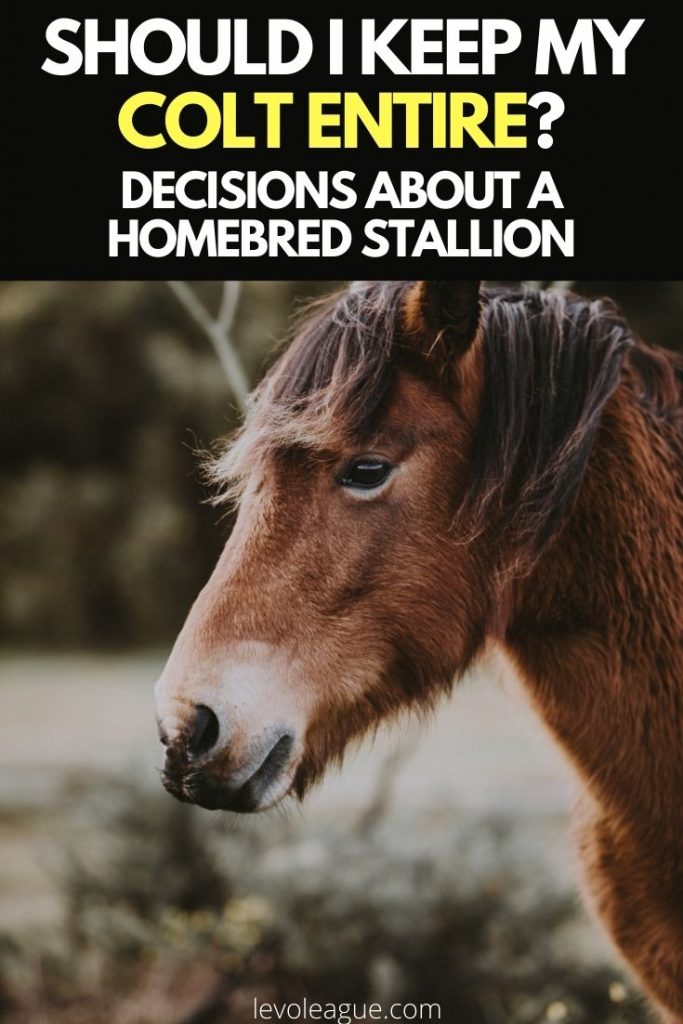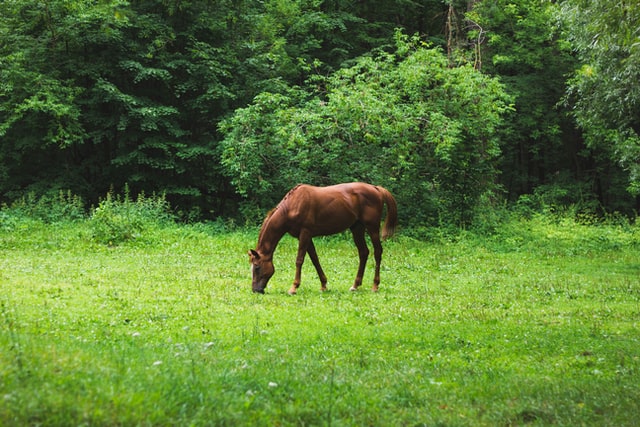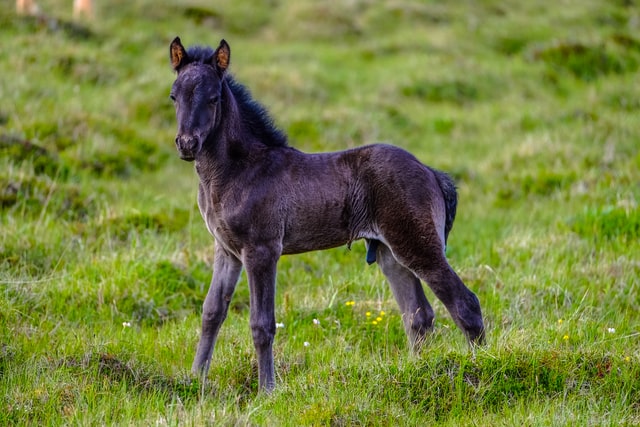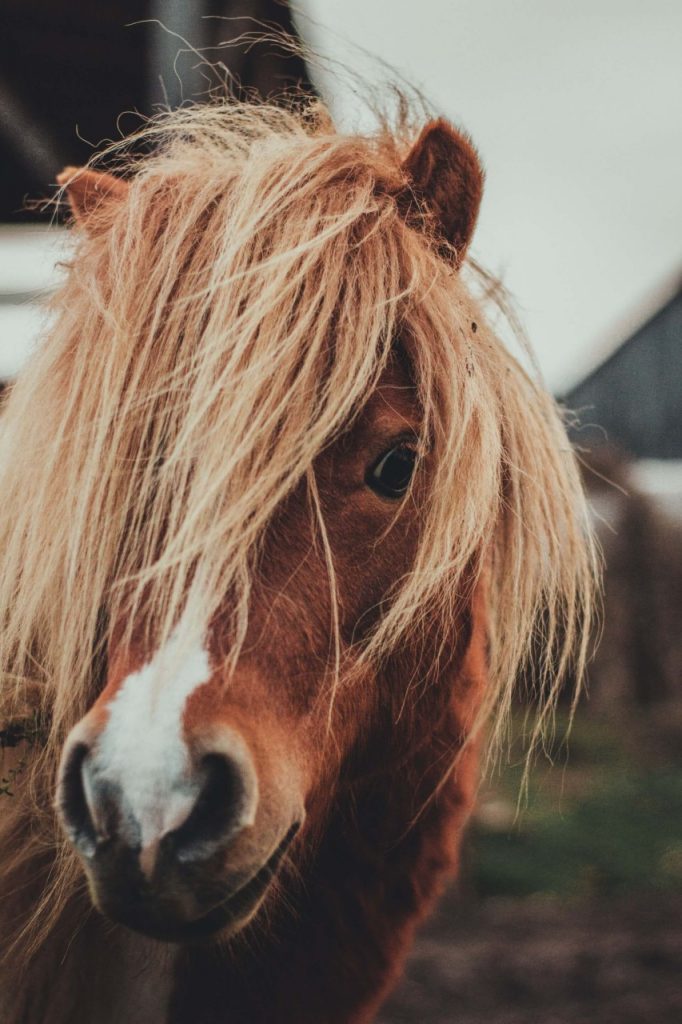Should I Keep my Colt Entire? – Decisions About a Homebred Stallion
In some countries stallions are quite common, for example, in Spain stallions tend to be used as riding horses and the mares often only as breeding animals.
In the UK and USA, most male horses not intended for breeding are gelded.
It is certainly not true that stallions are dangerous; in fact, this should not be the case if the horse is correctly managed and handled, and they can prove excellent performance and breeding animals.
So your new foal is a colt, and he’s good looking. You fall to considering his future, and prospective gelding. Maybe you are considering keeping him entire? What questions should you ask yourself if you are considering raising a homebred stallion?

Will You Want to Breed Him?

It sounds obvious, but will you actually want to breed from your stallion or do you just quite like the idea of owning one?
If you are not planning to breed him, your horse will probably have a much better quality of life as a gelding. As an entire male he is likely to spend more of his time being turned out alone, be very focused on breeding mares and if never given the opportunity to do this, he could become stressed and frustrated.
This may affect his temperament, making him more irritable, and his condition, as he may wear himself out running the fence line and calling to any mares that come near him. He may also represent a danger to himself or others, attempting to leave the field to follow a mare in season that passes your fields.
He would be more content as a gelding. Geldings can go out with other horses in single sex or even mixed groups, socialise with their equine friends on a daily basis and generally will be more relaxed and more able to behave like a ‘normal’ horse.
Do You Have Your Own Facilities?
If you are keeping the mare and foal at someone else’s stable, you should probably ask about his policy on stallions. Also check other livery yards in the area. Don’t be surprised if you find that the majority of them do not accept stallions.
For the livery yard owner, stallions represent additional expense over other horses in requiring own turnout and additional care when being handled, as they can be more sensitive and there is a risk of other boarders’ horses potentially ending up pregnant if care is not taken!
Keeping a stallion is a much easier prospect if you have your own stable and fields as it is then entirely your business to provide him with the appropriate safe facilities and to handle him with a mind to any horses he is kept close to.
Does He have Conformational Flaws?

However good looking your colt is to you, he may have physical flaws that would be off-putting to mare owners. It is true that no one horse is perfect, but when breeding, the parents should be as close to the ideal as possible.
Certain flaws may make a horse more prone to long term problems e.g. cow hocks and bone spavin. Have him assessed throughout his early life, ideally with professionals, but more cheaply by presenting him on horse forums and asking for feedback.
Look out for consistent points e.g. too straight-shouldered, being made by different users or different advisors. If his conformation is too poor to justify ever breeding him, he is best gelded.
Does He have Good Bloodlines?
Is the foal well bred enough to have a future as a stallion? However good looking he is, a stallion of unknown or less than excellent parentage will face an uphill struggle unless he should excel in competition – and you won’t know about that for years.
Even then he will face competition in the breeding arena from other horses of similar ability but with sires that were themselves in demand.
Researching the amount of young stock by your foal’s sire and the price they are selling for will help you establish how valuable his relatives are, and provide a rough indication of whether his own get would be valuable.
Is He of a Breed That will be in Demand?
Is your colt of a breed or type firstly that people will be keen to breed or cross to, or that there are few examples of in your area? If the local market is already saturated with good quality Thoroughbreds, what will recommend your new thoroughbred stallion to mare owners?
If riders in your area are most enthusiastic about dressage, will a stallion bred to show-jump be particularly popular?
Research your market, see what stallions are already standing, and what the equestrian scene in your area is most focused on, e.g. western versus English, ponies versus horses? Then you can decide if the stallion your colt will develop into has a potential niche.
Are You Prepared to Invest in His Future as a Stallion?

If you seriously plan to market and promote your colt as a stallion, he is going to cost a lot of money! You need to look at making sure he is fully registered with appropriate societies, possibly taking him for grading, then in the future at competing and showing him and at advertising.
If you are going to accept mares for breeding you need safe facilities, insurance and the time or manpower to care for additional horses. Setting up as a reputable stud is a demanding undertaking, and standing a stallion correctly is never a straightforward money-making venture.
Ultimately only you can decide what is best for you and your horse. Individual horses will vary in temperament and behaviour- for example some stallions will turn out happily with a couple of gelding friends, whilst others must be kept in isolation.
Your own circumstances will vary, and you must make the decision based on your situation and the advice of experts that have personal knowledge of you and your horse.






